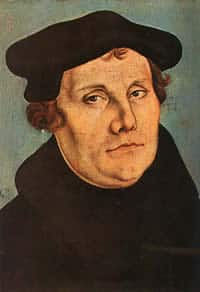The reformation began within the Catholic Church. On Oct. 31, 1517, Martin Luther a professor and a monk of theology posted his 95 Theses on the Castle Church in Wittenberg, Germany. These theses were a series that attacked the sale of indulgences. Luther criticized what he considered other abuses in the church. Luther taught that God justifies human beings. What Luther meant was that God makes them righteous through His kindness to the people.
In Jan. 1521, Pope Leo X excommunicated Luther and declared him a heretic. Emperor Charles V and the members of the imperial  diet ordered Luther to appear before the diet in the Worms, Germany. In May 1521, the emperor signed the Edict of the Worms, a document which declared Luther to be an outlaw whom anyone could kill without protest. Frederick the Wise protected Luther. Luther continued to the Protestant movement until his death in 1546.
diet ordered Luther to appear before the diet in the Worms, Germany. In May 1521, the emperor signed the Edict of the Worms, a document which declared Luther to be an outlaw whom anyone could kill without protest. Frederick the Wise protected Luther. Luther continued to the Protestant movement until his death in 1546.
Reformation
Reformation was a religious movement of the 1500’s that led to Protestantism. This movement had an impact on social, political, and economic life. Before the reformation, Europe had been held together by the universalism of the Catholic Church and the claim of the Holy Roman emperor. After the reformation Europe had several large Protestant churches and smaller Protestant religious groups. From the result of the Reformation, Europe was divided between the Catholic counties of the south and the Protestant countries of the north. This diversity of religious life created a mood of religious toleration and the respect for the importance of individual conscience. The Reformation also stimulated many reforms within the Catholic Church. Martin Luther believed that he can change something that he believed in. Martin protested some of the practices in the Catholic Church. He stood up for what he wanted to change. He had enough guts to stand and protest what was wrong.
